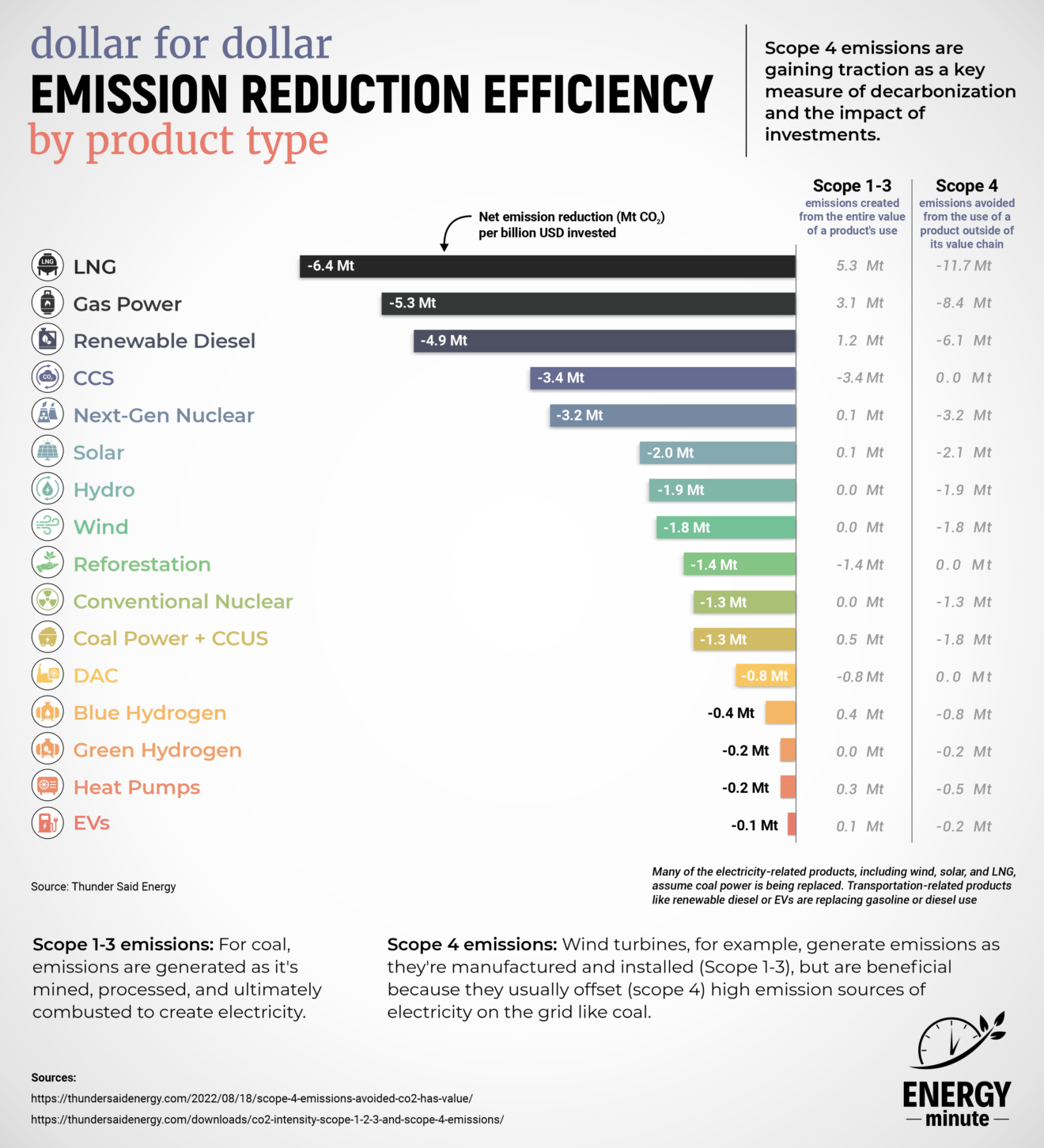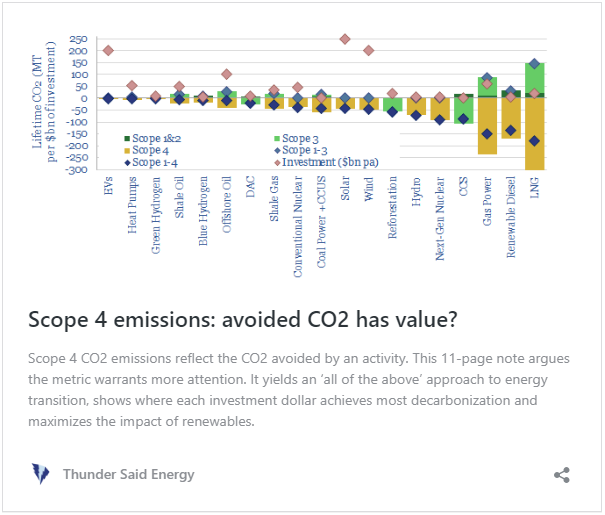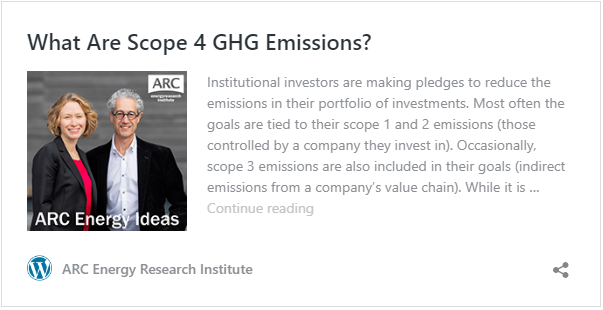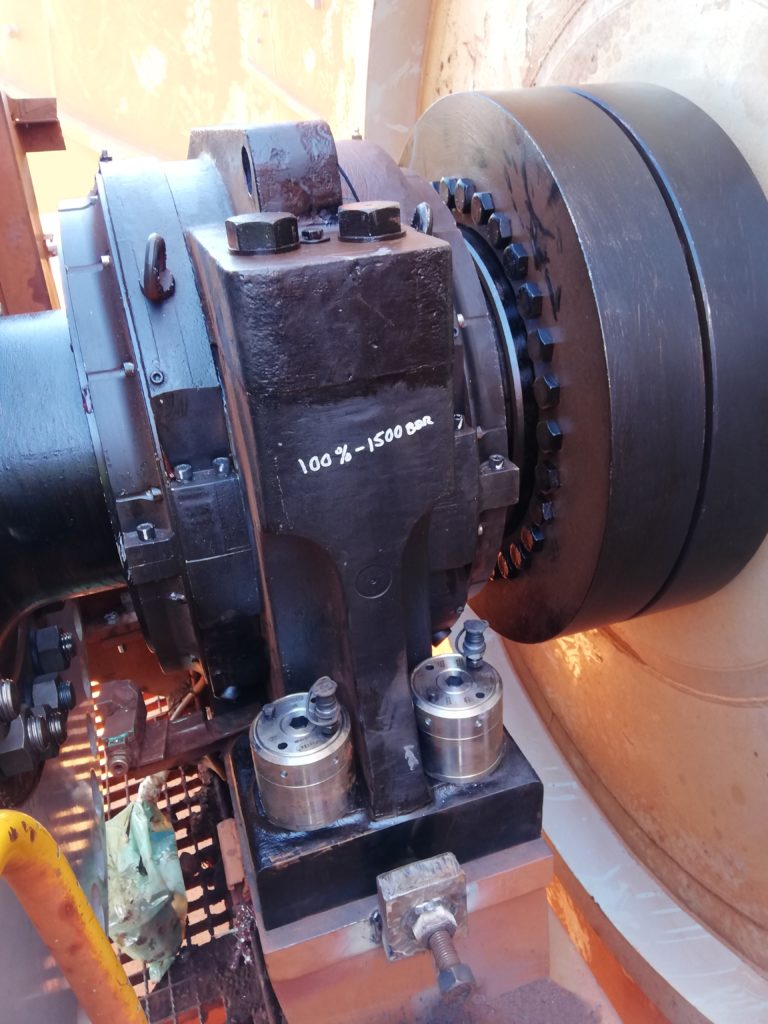By Aaron Foyer
Emissions series:
Scope 1, 2, 3 Explainer | Scope 4 Emissions
When considering clean energy, it’s important to understand the energy and ultimately emissions being displaced. Replacing a high-carbon source with a low-carbon one, like replacing coal with wind power, helps reduce emissions. On the other hand, shifting from one low-carbon source to another provides almost no decarbonization.
- Scope 4 emissions, also known as avoided emissions, are emerging as one of the most important investment metrics in decarbonization.
Rob West at Thunder Said Energy analyzed different decarbonization investments for replacing coal, gasoline, and more. What came from it was the dollar for dollar the most effective investments in reducing emissions.

Courtesy of ENERGYminute
See more articles and infographics from ENERGYminute HERE
This infographic is based on the modeling and a report put together by Rob West at Thunder Said Energy about Scope 4 emissions.
While Scopes 1, 2, and 3 emissions are well-established in the greenhouse gas accounting framework, Scope 4 is a term that has emerged more recently to address the indirect and upstream/downstream emissions that can have a significant environmental impact.
The various emission scopes
- Scope 1 Emissions: These are direct emissions from sources that are owned or controlled by the reporting entity. Examples include emissions from on-site combustion of fossil fuels and emissions from company-owned vehicles.
- Scope 2 Emissions: These are indirect emissions associated with the generation of purchased energy, such as electricity or steam. Companies report Scope 2 emissions as a result of their energy consumption, but they don’t control the actual generation of the energy.
- Scope 3 Emissions: These are indirect emissions that result from activities related to the reporting entity but occur in the value chain, both upstream (e.g., supply chain emissions) and downstream (e.g., emissions from product use by customers). These emissions are often the largest and most complex to measure, as they involve a wide range of activities and stakeholders.
And newer to the vernacular of emissions reporting are Scope 4 emissions:
- Scope 4 Emissions: These refer to emissions that are reduced by a product’s use outside of its value chain. For example, an electric vehicle generates emissions during its construction and any carbon associated with electricity from the grid. But it also avoids any emissions that would have been generated had the car been an internal combustion engine instead of an EV.
The counterfactual matters
Scope 4 emissions really depend on what would have happened in the absence of the product, but these can be tricky. When a wind turbine is added to the grid and displaces fossil fuels, there is a measurable emission reduction benefit to that addition. On the other hand, if a wind turbine is added but displaces nuclear power, there is no decarbonization that occurs. Simply measuring Scope 1-3 misses that key nuance. Scope 4 helps better allocate spending to emissions reduction initiatives.
Looking ahead: Scope 4 emissions are not as well-defined or standardized as the previous scopes, and they can vary in how they are measured and reported. The motivation behind tracking Scope 4 emissions is to encourage companies to consider the broader environmental impact of their operations and to identify opportunities for reducing emissions smarter investments.
As the concept of Scope 4 emissions continues to evolve, there may be further standardization and guidelines developed to help companies measure and report these emissions more accurately and consistently.
Sources:
https://greenly.earth/en-us/blog/company-guide/what-are-scope-4-emissions
Share This:





